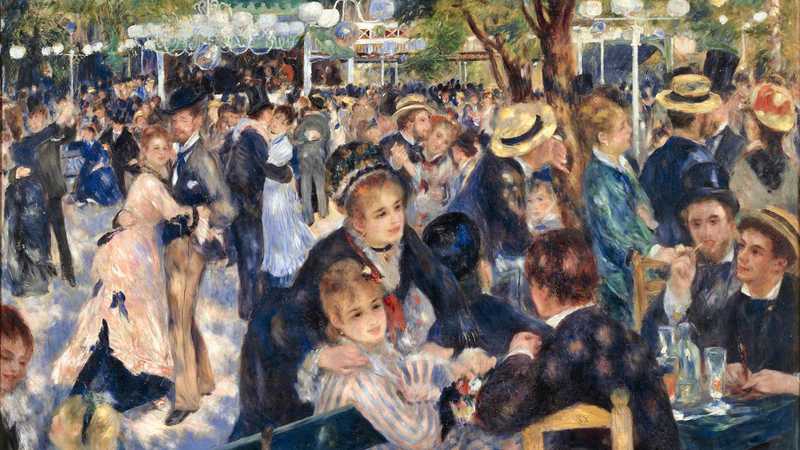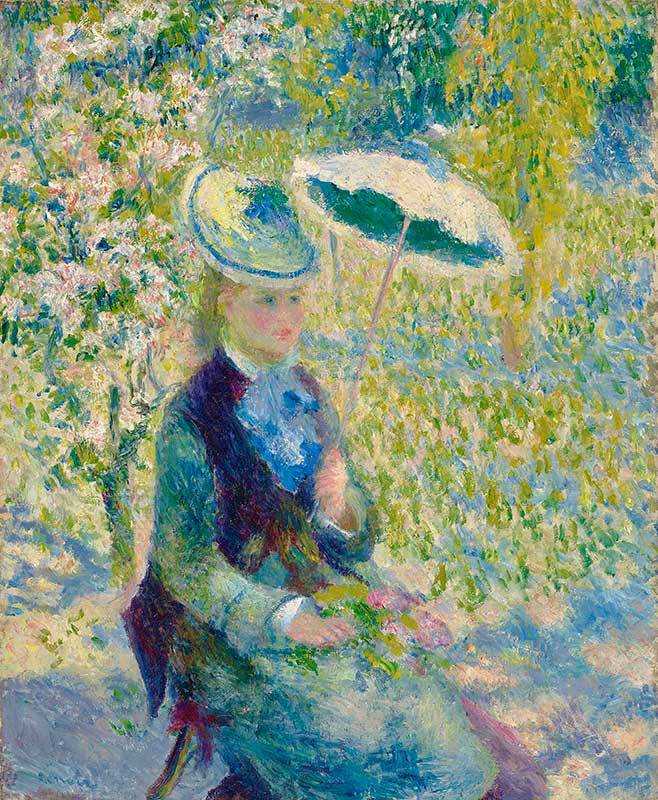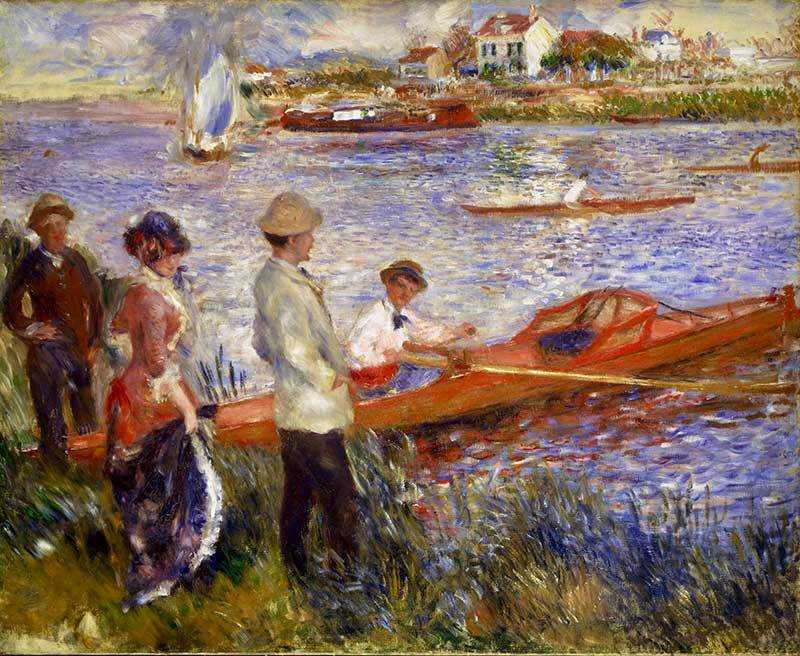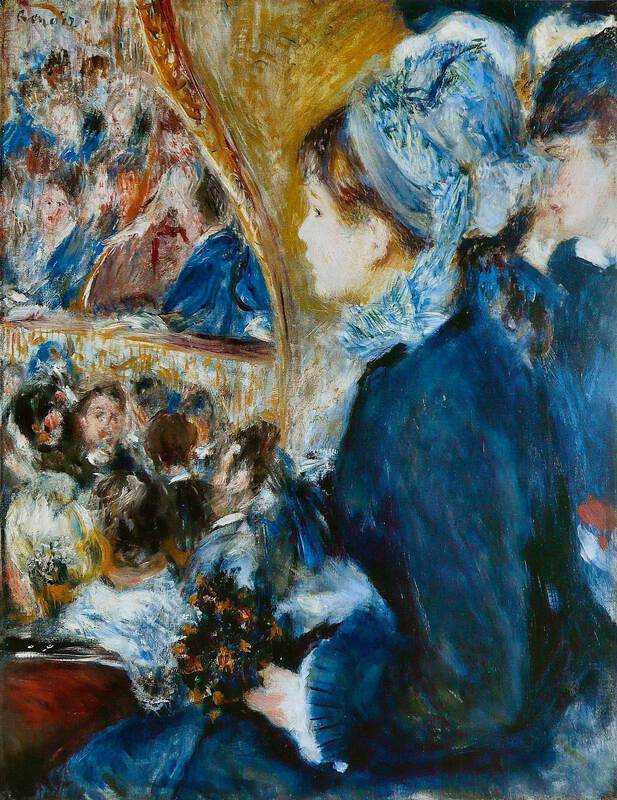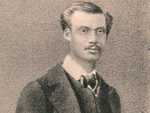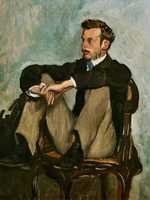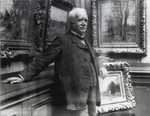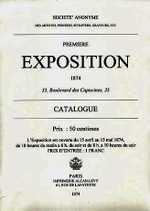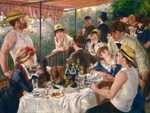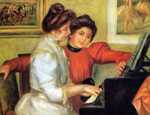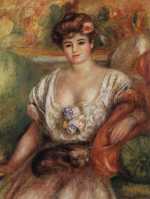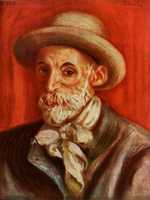1. Renoir’s Early Life
Unlike many of the impressionists, Renoir did not have family money. Happily, his natural talent allowed him to contribute to his family's expenses from a young age.
1841: Renoir is born on 25th February, the sixth of seven children to a family of modest means in Limoges. His father is a tailor, and his mother is a seamstress.
1845: Renoir’s family moves to Paris when he is about 3 in search of a better life. He studies at a Catholic school for 7 years.
1854: To support his family, Renoir drops out of school aged 13 and starts work as an apprentice at a porcelain factory shop where his natural artistic talents shine. He paints floral motifs on porcelain cups and vases. His talent is so obvious that co-workers refer to him as "Monsieur Rubens".
The industrial revolution puts an end to his work with the advent of machines. To earn a living Renoir paints fans and banners. During this time, he visits the Louvre often to study art by the French Rococo masters
2. 1860s: The Early Impressionist Years
The 1860s is a difficult decade for Renoir. He struggles financially and is often too poor to buy art materials.
To cut down on expenses, Renoir shares living space with Monet and they survive on a meagre diet of beans and grains. He makes some money by painting portraits and porcelain.
1862: At the age of 21, Renoir decides to study painting seriously. He has some money saved up and joins the Ecole des Beaux-Arts (Fine Arts School). He soon discovers he doesn’t enjoy that place too much and enters the studio of the painter Charles Gleyre, where he meets Monet, Bazille, and Sisley who would become long-lasting friends. Together this group would become a part of a great art revolution: impressionism.
1863: Edouard Manet, also known as the founder of Impressionism, paints Déjeuner Sur L’Herbe, stirring up the art world at the time. Artists with similar views flock to him and begin meeting up at the Cafe Guerbois.
1863: Monet organises an excursion to Fontainbleau to paint the landscape. Renoir, despite being a portrait artist, joins them. There he meets Narcisse Diaz and the two become friends. Diaz advises Renoir to lighten up his palette and gives him art supplies for free.
1864: Renoir gets accepted by the Salon of the Academy des Beaux-Arts on his first try. To exhibit at the Salon is a big deal for the artists because it provided them with a platform to showcase their work to potential customers and art critics.
1865: Renoir moves into Sisley’s studio.
1866: Renoir moves in with Bazille after Sisley gets married. The same year he gets rejected by the Salon.
1867: Renoir paints Diana the Huntress in a conventional style of composition that’s meant to appease and please the traditionalists, but his efforts are to no avail and he gets rejected by the Salon a second time.
Interesting fact...
Diana was not originally meant to be a painting of the Roman goddess Diana. Renoir himself says of the painting, "I intended to do nothing more than a study of a nude. But the picture was considered pretty improper, so I put a bow in the model's hand and a deer at her feet. I added the skin of an animal to make her nakedness seem less blatant - and the picture became a Diana.”
1868: Lise with a Parasol, a full-length portrait of his favourite model and girlfriend Lise Trehot is accepted at the Salon with positive reviews.
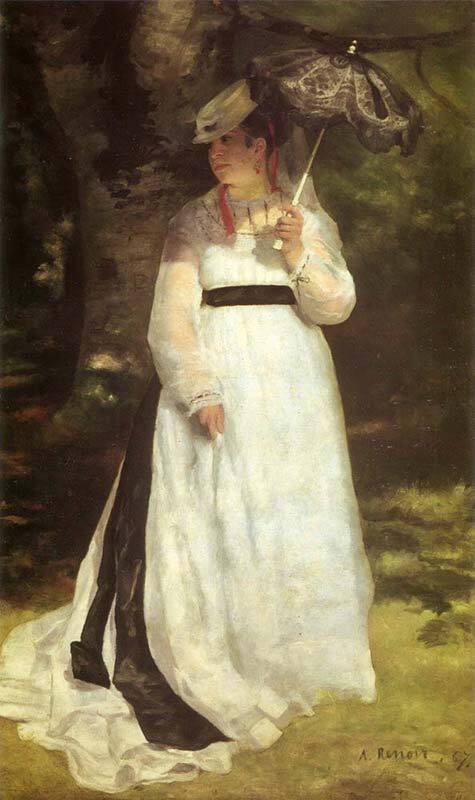
1869: Renoir paints the Frogpond or Le Grenouille ('frog' was slang for young women). This was painted en plein-air (ie outdoors), at a favourite spot for day-trippers on the river Seine. Renoir was accompanied by Monet on this painting excursion and both produced similar versions of the scene.
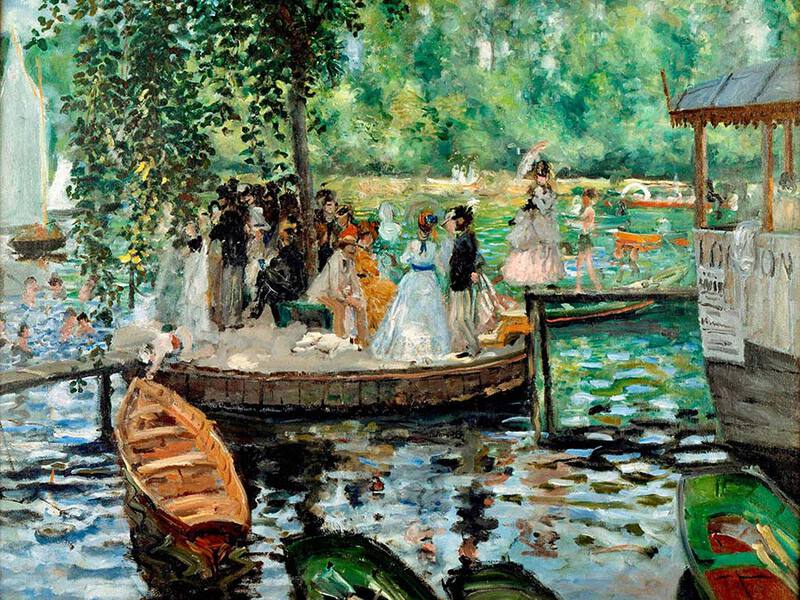
3. 1870s: the height of Impressionism
The 1870s saw the impressionists club together and take on the conservative art establishment via their own independent exhibitions.
Though they had limited success at the time, this was the decade in which impressionism really took off.
1870: Peace is disturbed as the Franco-Prussian war takes place over the winter of 1870-71. Emperor Napoleon III declares war on the Prussians, but things go badly and the Prussians lay siege to Paris. Renoir is conscripted to a cavalry unit but does not become a part of the actual fighting.
1871: Renoir returned to Paris in June 1871, along with the rest of the impressionists (many of whom had spent the war in London). During his time in London Monet befriended Paul Durand-Ruel, who later on became the main art dealer for the impressionists. He bought their paintings providing invaluable financial support in the tough times to follow. Through Durand-Ruel, Renoir was able to attract other buyers as well.
Interesting fact...
During the Paris Commune of 1871, Renoir was captured while painting by the river Seine and was thought to be a spy for the French army. He was about to be executed but was saved when the Commune leader, Raoul Rigault, recognized Renoir. Renoir had saved Rigault’s life several years before when Rigault was famished and in need of shelter. Renoir had helped him by hiding him from Napoleon III’s police for several days. This act of mercy ended up saving his life.
1872: Renoir gets rejected by the salon, and gets dumped by Lise Trehot, his girlfriend of seven years who marries an architect.
1873: The end of the year brings another problem: an industrial crisis causes Durand-Ruel to fall into severe money troubles and he withholds payments from the impressionists.
1874: The dire circumstances spur the impressionists into action and they gather together to put on the first impressionist exhibition in the Boulevard des Capucines. They establish their own company, the Societe Anonyme des Artistes, Peintres, Sculpteurs et Greveurs.
Renoir holds a central organising role and displays six paintings in oil and one in pastel. But the public's response is highly negative, with Renoir’s Dancer receiving a great deal of ridicule. Another submission to the first exhibition is La Loge (or The Theatre Box) which later acclaims great fame as one of the best artworks of the impressionist period.
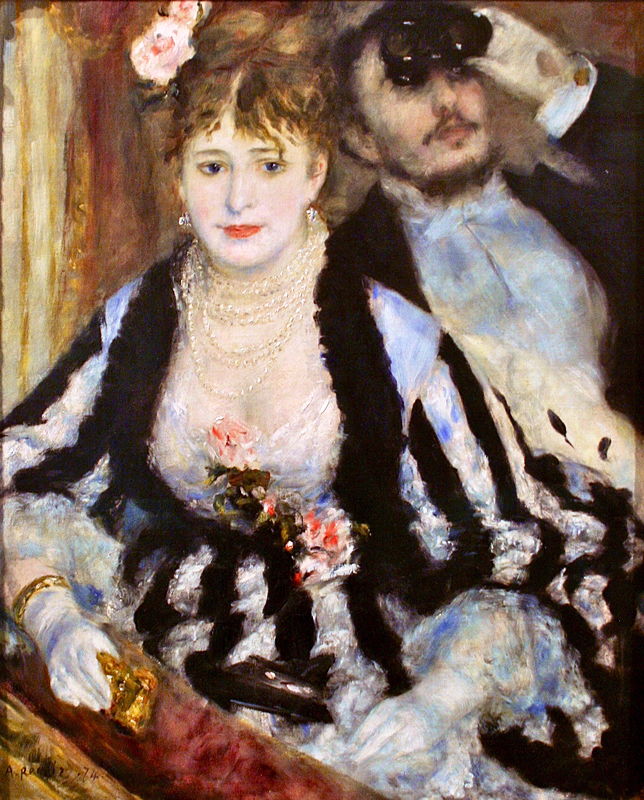
The small good that comes out of this exhibition is that while Renoir sells only a few paintings, his work catches the eye of Victor Chocquet, a collector whose patronage keeps him afloat during the economically unstable years to come.
Interesting fact...
After the exhibition, the critic Albert Wolff wrote for Renoir’s style: “Try to explain to M Renoir that a woman’s torso is not a mass of decomposing flesh with green and purple spots that indicate the state of total putrefaction in a corpse!” The critics were not the only ones with some colorful insults, some Impressionist painters were also ready for mockery. His friend Degas taunted his style, calling it “as puffy as cotton wool,” and Mary Cassatt scorned his nudes as “enormously fat red women with very small heads.”
1876: The second impressionist exhibition takes place two years after the first one, with Renoir exhibiting 15 paintings, including 12 portraits. Renoir does not receive as much criticism this time but overall the exhibition does not fare well.
1877: Renoir contributes 21 paintings to the third impressionist exhibition, including one of his most important works, Ball at the Moulin de la Galette. The critic Wolff does not hold back on his bitter words about the painting, saying
“So many studies done at the morgue to receive such a result.”
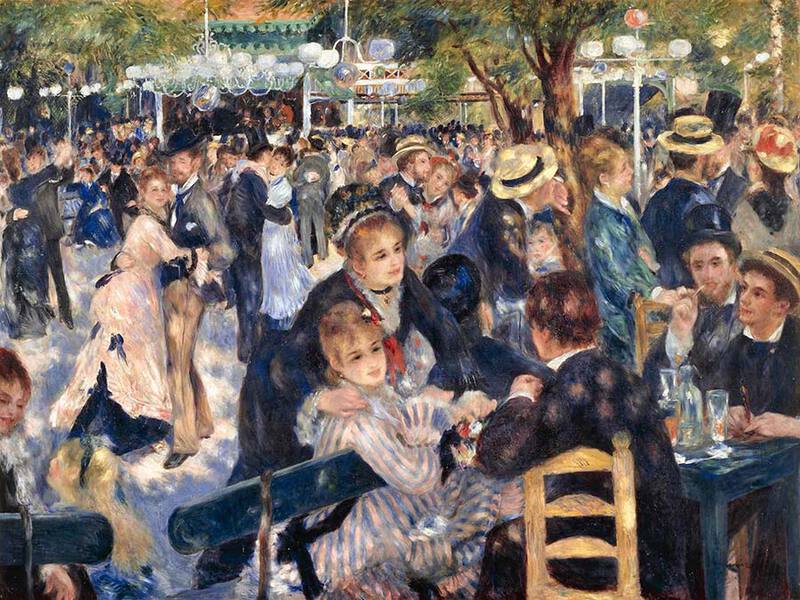
Interesting fact...
Renoir painted another, smaller version of the Ball at the Moulin de la Galette (78 × 114 cm) with the same title. It is said that one of them is a copy of another; it is not known which one is the original. It is also not known which version was displayed at the 3rd Impressionist exhibition in 1877 because the catalogue does not mention the size of the painting exhibited. The smaller version is now believed to be in Switzerland, owned by a private collector.
4. 1880s: Renoir’s Dry Period
Needing to make ends meet, Renoir changed his artistic style in a big way in about 1880.
1878: After three unsuccessful exhibitions, Renoir is done with the hateful comments about his work and also realises that he needs to change his style in order to sell his art. He quietly withdraws from the fourth impressionist exhibition and obtains relative financial stability via private commissions of portraiture.
He tones down on his impressionist style and his painting, the Cup of Chocolate, is accepted by the Salon. However, it does not receive any reaction worth getting excited over. During this period he paints Madame Charpentier and her Children, a wealthy socialite, and her family, which is well received, largely due to the social status of Madame Charpentier.
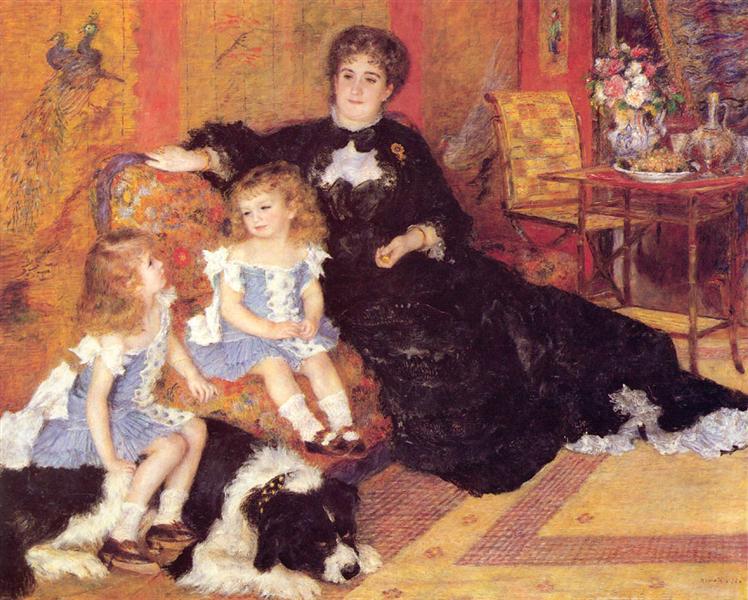
1880: Renoir's paintings are once again accepted by the Salon, but fail to make any real mark.
1880-81: Renoir meets Aline Charigot, his girlfriend, model, and future wife whom he courts at the Hotel Fournaise. He paints the Luncheon of the Boating Party at an outdoor terrace which depicts people having fun on a Sunday afternoon. Impressionist painters Mary Cassatt and Gustave Caillebotte also model for this painting.

1881: Renoir travels to Italy for the first time, funded by a deal he makes with Paul Durand-Ruel. During this trip, he pays great attention to the great masters of the Renaissance era and is highly impressed by the classical ideas of structure, composition, and clear lines he sees in the works of Raphael and Titian. He also goes to Algeria for a few months to rest and returns with several paintings inspired by his stay there.
1883: the start of Renoir’s Dry Period or Ingres Period, due to the similarity his art holds with the French neoclassical painter Dominic Ingres. This phase lasts a few years, until 1888.
During this period Renoir paints a series of three paintings of couples dancing, with striking differences in the setting. One of them shows a high society ball in the city, while one is a rather informal ball in the countryside, and one shows dancing at a small village called Bougival, located in the north of Paris.
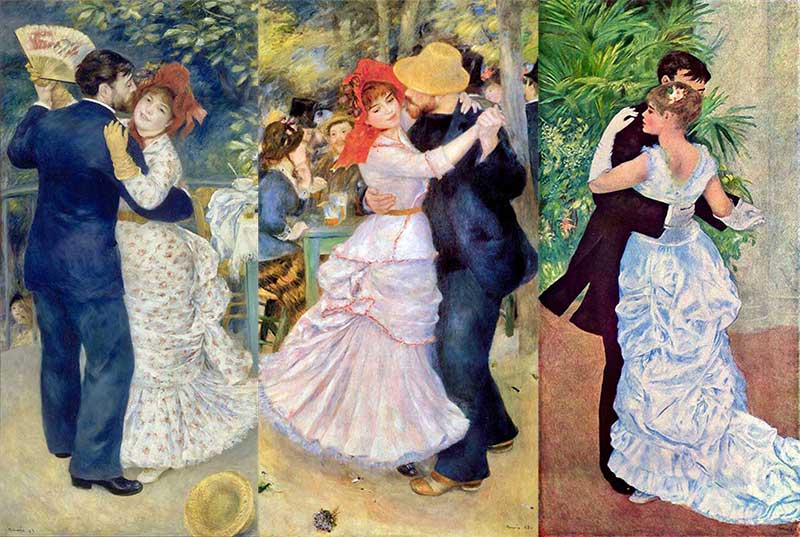
1884: Renoir paints The Bathers, a painting of three female nudes, which is reflective of Renoir’s shift and his emphasis on form, volume, and lines instead of brushwork and colour.
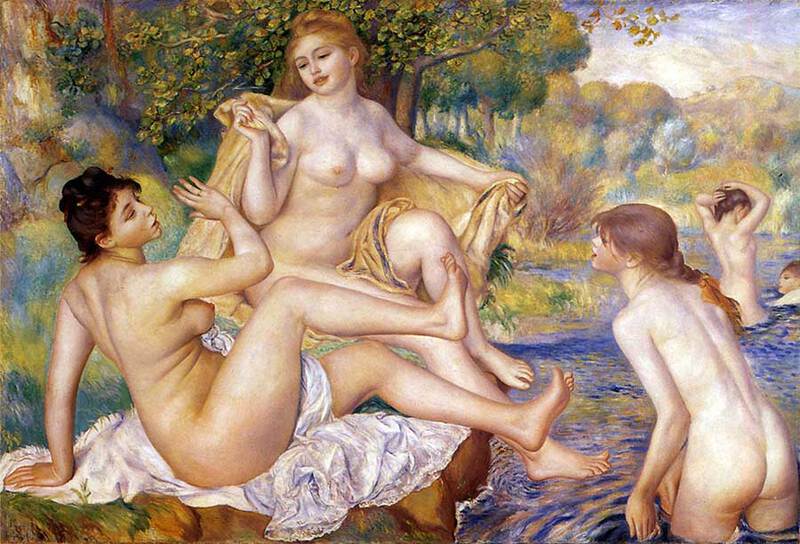
5. 1890-1919: Renoir’s Later Years
There was sorrow and joy in Renoir's later years: he had children, discovered sculpture and sold paintings, but suffered from debilitating illness.
1885: Renoir’s first child Pierre is born (when Renoir was 44).
1888: Renoir’s health is failing and he suffers from rheumatoid arthritis and facial paralysis. His ailments only grow worse over the following decades of his life, and Renoir moves to a house in Cagnes-sur-Mer for the warm Mediterranean air to alleviate his pain.
1890: This is the time when public recognition pours in after Durand-Ruel holds an exhibition showcasing 110 of Renoir's masterpieces, and his painting Yvonne and Christine Le rolle Playing the Piano is bought by the French state for the Musee du Luxembourg. Financial success also comes knocking on his door as he receives several commission requests by businessmen asking him to paint their wives and daughters.
Renoir finally marries Aline Charigot, his long-term girlfriend and the mother of his son Pierre. (some sources place the year as 1891).
1894: His second son, Jean, is born (when Renoir was 53).
1898: Another attack in December causes the paralysis of Renoir's right arm, with deformation in his hands and arms setting in two years later.
1900: French government awards Renoir the Chevalier de la Légion d’Honneur.
1901: Renoir's third child, Claude Renoir, is born (he is 59). In a twist reminiscent of old times, Renoir exhibits at Bernheim-Jeune in Paris along with his old comrades including Monet, Sisley, Pissarro, Degas, and Cezanne.
1910: Renoir's paralysis worsens and affects his legs, and he is confined to a wheelchair. Renoir does not give up painting, and when his sickness does not allow him to hold up a brush he has the paintbrush bandaged to his hands. He also has a special easel built for him to accommodate his difficulty in painting.
1913: Renoir delves into sculpture in his later years on the advice of his friend Vollard, an art dealer, who also introduces him to the sculptor Guino. Renoir and Guino collaborate on some sculptures where Guino would follow the instructions given to him by Renoir as Renoir was incapable of doing the work. Renoir reproduces several of his own paintings in clay.
Check out our impressionist sculpture page.
1911: Renoir is made an officer of the Legion of Honour.
1915: Aline dies at the age of 56, apparently from distress caused by the injuries received by her sons in the first world war.
1919: Renoir dies on 3 December. He is buried next to his wife Aline in Essoyes. In his last days, when he reportedly was also suffering from pneumonia, he painted a large painting and a still life painting of apples.
6. Renoir’s Legacy
These days Renoir is one of the premier impressionist artists, ranking behind only Monet, Cezanne and possibly Manet.
For the editors here, he is best known for two things: portraiture, particularly of women and girls; and paintings that make you smile, often because of the luminescent quality of his output.
Here are a few examples landmarks demonstrating the world's recognition and appreciation of Renoir.
1919: Shortly after Renoir's death dealer Ambrose Vollard published a book about his life and works, La Vie et l'Œuvre de Pierre-Auguste Renoir
1990: One of Renoir's finest works, Renoir's Moulin de la Galette, sells for $78.8 million. This makes it the world's second most expensive impressionist painting.
2012: The critically acclaimed film Renoir is released, charting the last years of Renoir's life through the eyes of his last model.
What next?
Why not check out our pages on:

